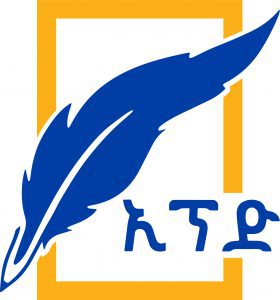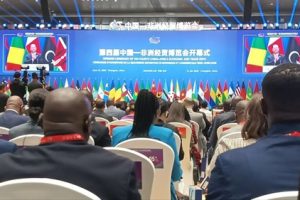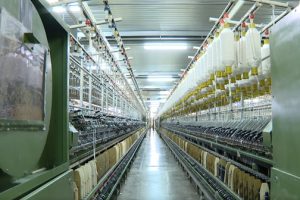
The government economic reform program, supported by the International Monetary Fund four-year extended credit facility ECF arrangement, envisages a comprehensive policy package to stimulate private sector activity and increase economic openness to promote higher and more inclusive growth.
Strengthening social safety nets to mitigate the impact of reforms on vulnerable households is a critical component of the authorities’ reform program.
According to the Ministry of Finance key policies including moving to a market-determined exchange rate helps address external imbalances and relieve foreign currency shortages. It also helps combating inflation through modernizing the monetary policy framework, eliminating monetary financing of the budget, and reducing financial repression, creating space for priority public spending through mobilizing domestic revenues, restoring debt sustainability, including through securing timely debt restructuring agreements with external creditors and strengthening the financial position of state-owned enterprises to tackle critical macro-financial vulnerabilities.
Nevertheless, recently Ethiopia’s Parallel Forex Rate Surges to 150 ETB, testing government reforms program. Ethiopia’s forex parallel market continues to experience significant volatility, with the rate soaring to 150 ETB per USD, a sharp increase from the 130 ETB per USD recorded just two weeks ago. This fluctuation underscores the challenges of aligning the official and parallel exchange rates, despite ongoing efforts by the government and commercial banks to stabilize the market.
According to Costentinos Berhutesfa (PhD) a senior economist, as part of a broader economic policy reform agreed with the International Monetary Fund (IMF), the intention of liberalization of the foreign currency market was to close the gap between the official and parallel markets. The shift to a floating exchange rate was also intended to enhance market transparency, increase liquidity, and reduce reliance on informal trading.
However, although the foreign reserve has improved, the rise in parallel market prices underscores the ongoing challenge of balancing the supply and demand for foreign exchange.
Commercial banks have intensified efforts to attract remittances, a crucial source of foreign exchange for the country. One prominent initiative is the “CashGo” mobile application, developed by Eagle Lion, which allows Ethiopians living abroad to send money back home quickly and securely. The app is supported by major Ethiopian banks, Commercial Bank of Ethiopia (CBE), the Bank of Abyssinia, and Dashen Bank. While CashGo is a key part of the push to channel remittances through formal banking channels, the growth in remittance inflows, rising by 24 percent over the past three months, can be attributed to a broader set of efforts by both the government and commercial banks to promote formal remittance systems.
The National Bank of Ethiopia (NBE) has also played an active role in this process. NBE launched the Debo initiative, an awareness campaign aligned with the new Foreign Exchange Directive 01/2024, aiming to educate the Ethiopian diaspora about the benefits of using Foreign Currency Accounts (FCA) and the legal remittance systems in place. Through this, NBE hopes to promote understanding of these policies and increase the flow of remittances through formal channels. Additionally, the central bank has announced a deposit of 100 billion birr across 31 banks nationwide, which the Diaspora community can access for various purposes via the unite.et app.
Despite the positive strides in attracting remittances, the gap between official and parallel market rates remains a persistent issue. These days, the official exchange rates are ETB 139.74 per USD at Rooha Forex Bureau and ETB 126.48 per USD at CBE, still considerably lower than the parallel market rate of ETB 150. This disparity signals continued pressure on the official forex market, as many individuals and businesses continue to turn to the parallel market due to the higher exchange rates offered.
The introduction of the provision of foreign currency by auction perceived by many customers as bizarre and put them in dilemma weather it goes in line with free market policy in which the exchange rate is governed by supply and demand.
However, the Ministry of finance recently, emphasized the positive impact of the ongoing reforms, including a 161 percent growth in Ethiopia’s foreign exchange reserves over the past three months. The National Bank of Ethiopia and private banks have also benefited, with their reserves growing by 161 percent and 29 percent, respectively.
In addition, remittance inflows have risen by 24 percent, a development the government described as a significant achievement driven by reforms. It is also proved that the number of diaspora who send their foreign currency to their parents in the formal channel increasing from time to time which again helped banks to enhance their currency reserve.
As for the export sector, the plan for the past three months was to secure 1.1 billion USD. However, the country surpassed expectations, achieving 1.5 billion USD in export earnings during this period.
While these efforts show promise, the widening gap between the official and parallel forex markets continues to present challenges. Ultimately, the success of these measures will depend on maintaining investor confidence, ensuring continued access to foreign exchange, and addressing the persistent demand for forex that continues to fuel the parallel market.
During the imperial regime the nation was not economically integrated with the outside world.
That is to say, it exported fewer products and imported too much. But as to Costentinos, the economy was formatted with the western type of economy in which the flourishing of the private sector was apparent. Small and medium size industries were grown. Large scale farms owned by private individuals were flourishing and opening letter of credit in banks to secure loan for import business was easily conducted.
There was no shortage of hard currency in banks. Following the downfall of the imperial regime in 1974, the Dergue regime introduced the socialist ideology to govern the country and the economy had been set to be guided under the auspices of the new ideology. Many private enterprises including banks, insurances and micro finance institutions, productive sectors such as manufacturing, large agricultural farms and assets had been nationalized. Economic relation with the west and other international financial institutions was interrupted. The economy was turned to move downward. The nation lost chances to attain economic progress and left to face political repression.
The Ethiopian People’s Revolutionary Democratic Front (EPRDF) ascent to power in 1991 gave the nation the opportunity to liberalize the economy. New economic policy guided by free market was introduced. Once again, the nation opened its economy to the international actors. The financial sector also was liberalized and private banks began to flourish and currently more than 30 private and public banks are being operational.
Looking at the new development for economic growth as good stride, the Bretton Woods groups including the World Bank and International Monetary Fund showed positive sign to provide financial support in terms of grant and loan. So far in the last two decades the previous regime could obtain billions of Dollars for development schemes.
The money mostly spent for infrastructure development including roads, railways, Hydro Power dams, airports, industrial parks, schools, health sectors and tourism resort sites.
To attract more investment the government provided investors incentives and among others, tax holidays, sheds and other services such as electric power, internet services in fair price in the industry parks. The banking services provided services in one snap shop which simplified doing business there.
Both local and foreign investors put their money and established firms engaged in production and providing services. The manufacturing sector also played crucial role in creating job opportunities to hundreds of thousands. It also played vital role in linking the sector with agriculture, import substitution, boost export and creating self- sustained private sector competent at the international level.
According to the international financial institutions in the past decade and a half, Ethiopia registered a double-digit economic growth, which can be exemplary to other developing countries. Nevertheless, though the nation attained such dramatic growth it also came across with some upside downs which again hampered the pace of the growth.
Delay of accomplishment of mega projects incurred additional cost on the government coffer. The macro-economy also suffered a great deal and among others, foreign currency crunch, inflation, illegal trade, budget deficit, unemployment, trade deficit and the rampant corruption. To alleviate the challenge the current government introduced the new economic reform program, which is being implemented.
BY ABEBE WOLDEGIORGIS
THE ETHIOPIAN HERALD TUESDAY 18 MARCH 2025




